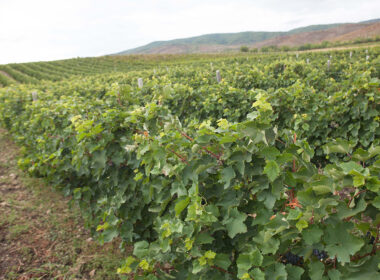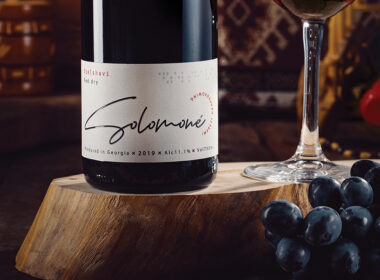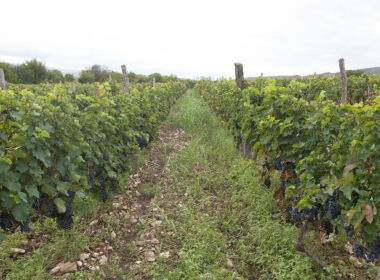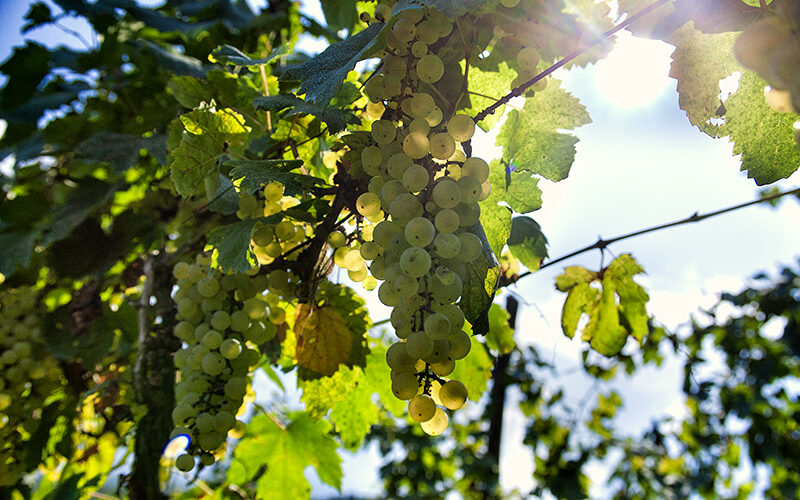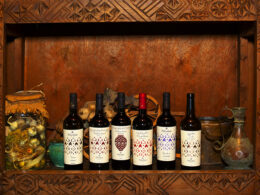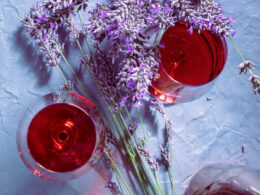Tazo Tamazashvili
Racha, a truly unique winemaking region of Georgia, can easily compare to famous mountainous regions of the New or the Old World with grand traditions of winemaking. Much like Mendoza, or Italian Trentino-Alto Adige, the quality of Racha wine derives from the soil, its exposition, and well-selected grape varieties. The main peculiarity of Racha, divided into two parts by the Rioni river, is its diversity of soils. Although vineyards and wines from the two banks of the river are different, the differences have more to do with the structure that hints towards its maker.
Some wines are affected by the temperature at harvest of the grape. This year, the Spring was quite cold in Racha. I can draw parallels with Burgundy, where March frosts are quite frequent. So, the locals have adopted an approach, where they plant their vineyards on slopes to avoid the damage that the cold can cause (similar to Racha). The thing is the climate is changing in Racha. It’s getting warmer, even hotter, in the region. I participated in the 2020 harvest (Rtveli) and the transition from warm to hot was very perceptible.
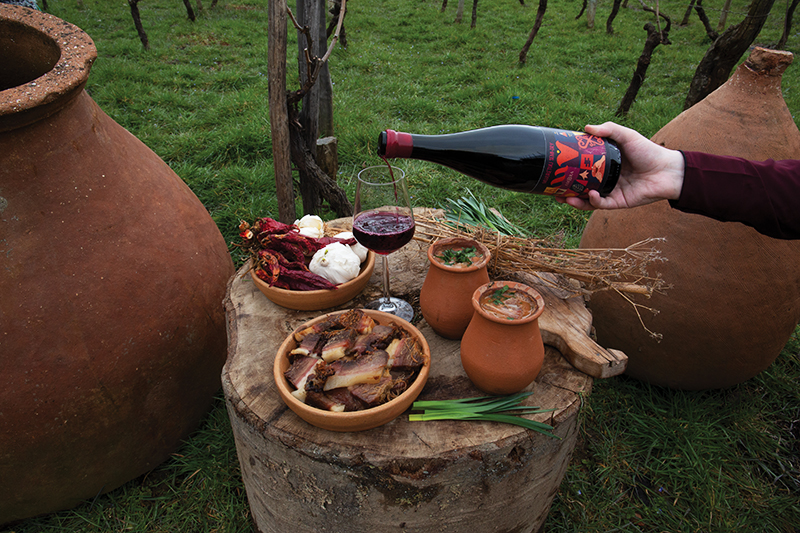
Unfortunately, the popularity of “Khvanchkara” (local PDO wine) was not very advantageous to the development of the region’s winemaking. A very prominent wine during the Soviet Era, Khvanchkara – a naturally semi-sweet wine made from Aleksandrouli and Mujuretuli grapes – could not establish itself in the world, stylistically. The situation today has changed, largely due to modern winemakers, who are using Aleksandrouli and Mujuretuli to make dry wines. This revolution is slowly becoming a trend. Local winemakers know that it is impossible to interest the world market solely with a naturally semi-sweet wine that was largely produced for our Northern neighbor over the years. If it wasn’t for this fact, Racha would have been a famous mountainous region with exceptional wines, characterized by good aging potential, depth, and uniqueness. It is very hard to make wine in these climatic conditions, build wineries, deliver technology, and withstand the winter that starts early and finishes late. This work has to be acknowledged.
Today, the future of this region is fully dependent on the modern Racha winemakers and their new wines that I wholeheartedly support, recommend, and love. These winemakers focus on experiments that help them refine the beverage and showcase the terroir. I am certain that a lot more experiments are yet to come and we will witness dry wines that are different stylistically, whether made in qvevri, aged in barrels or made using both techniques, with carbonic maceration, etc.
Racha, a beautiful and unique winemaking region, must produce great Georgian wines. We should not settle for just one style – a naturally semi-sweet one. The diversity will allow us to earn our place on the world market.
Racha stands out with the diversity of its grape varieties. There are ones that have already gained popularity, and ones that were brought from different regions and got accustomed to local soils and climate. Saperavi is a good example. Brought to Racha from Kakheti, it yields different results when grown locally. Wine made from Saperavi grown in Racha is very interesting and refined. It still needs a lot of work, but the wines that I have tried have distinct aromas, pleasant acidity, and velvety tannins.
Wine is a living organism that needs nurturing in the form of hard work, honesty, good planning, and competition. Racha must keep up with the world and produce various styles of wine. Racha has already gained some ground with its sparkling wines. These are not traditional sparkling wines, aged in bottles and made using secondary fermentations, but very promising Pet-Nats. They could potentially be made traditionally, aged on lees, and in bottles undergoing secondary fermentation. Incidentally, this method of Champagne and this style of wine remains my favorite.
White wines produced recently in Racha are also very interesting (Racha was not known for its white wines before). Local climatic conditions allow winemakers to produce great wines not only in Georgia but the world.
Pairing Racha wines with local cuisine
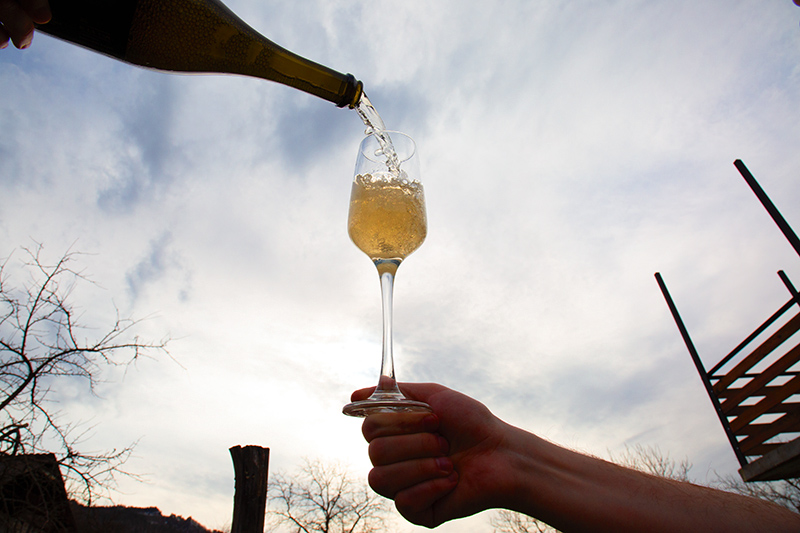
Racha has a unique gastro-culture that is tightly connected to the endemic grape varieties and wine from this region. I have selected vegetable as well as poultry dishes to pair with Racha sparkling wines. Today’s discovery is Tsitska-Tsolikouri Pet-Nat combined with Shkmeruli made with baked garlic. Garlic loses its bitterness when baked, leaving only sweeter aromas, which go so well with dry Pet-Nats. This combination reveals a third taste, which lets us know what would garlic taste like if it had a slightly tropical aroma.
As for the ambassador of Racha wines – Aleksandrouli and Mujuretuli: both are frequently grown together in this region. Generally, when the wine is made using two or more varieties, I prefer to have the two wines made separately and combined using assemblage. Using this approach, both the winemaker and sommelier can create a well-thought-out product, one that is richer and more interesting.
Wines from a particular region must withstand competition against wines from a similar region. Racha wines should compete with Trentino-Alto Adige, Burgundy, or Mendoza wines. Today, both international education and technological advances should allow Racha wines to stand among the wine from leading regions, and be a “must-try” for international experts and sommeliers. I’d love to see wines from the Racha-Lechkhumi region in world-class restaurants and wine bars, where the customer has a chance to learn about the culture of a country through its grape varieties and traditions.
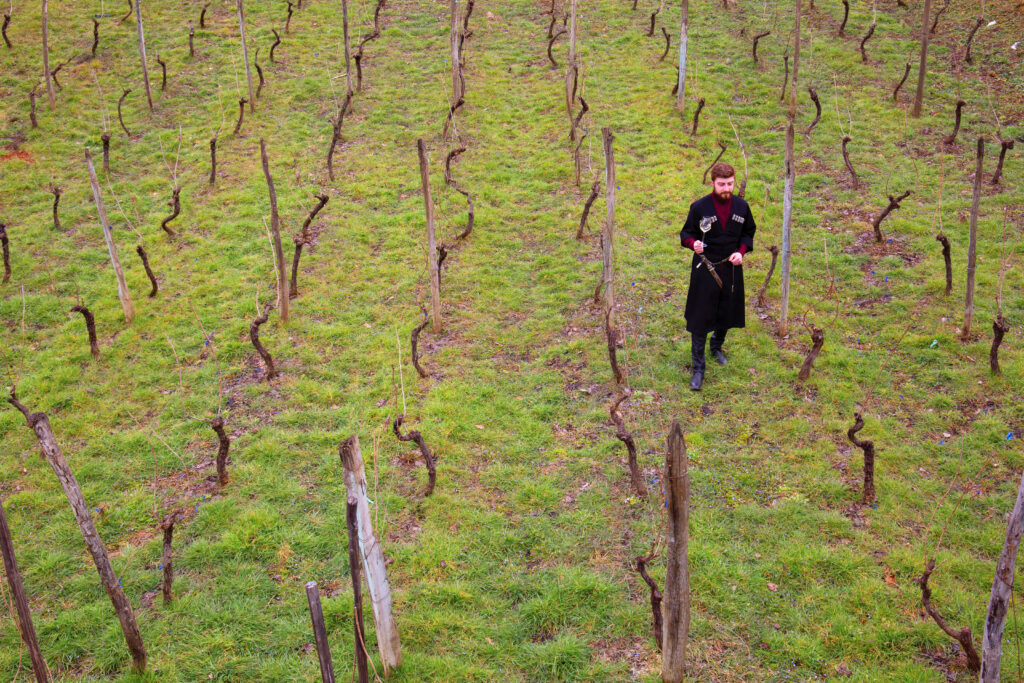
White wines made in Racha are relatively medium-bodied, refined, and with high acidity. Aging suits them very well. Considering their structure, acidity, and aroma, they have a great potential to age in bottles. These wines have a wide flavor profile and freshness that have a lasting finish. They combine well with vegetable dishes from Racha, especially Phkhali. These wines pair very well with sweet and sour sauces, as well as poultry dishes, namely Rachian Shkmeruli. The latter, combined with Mtsvane or Rachuli Tetra (even an assemblage of Tsolikouri) gives a lasting finish, that ends with a tropical aroma of wine and the sweet-sour taste of the dish.
The naturally semi-sweet Khvanchkara can be paired with traditional Georgian desserts – Churchkhela and dried fruits. Racha has the potential to keep up with developments in modern cuisine: the many sweet and sour pear or apple varieties that grow here can be used to prepare interesting fruit tarts. Rachian milk can be used to make various types of creams, or unique Rachian tarts, the base of which can be prepared with locally grown grains. “Khvanchkara” would be a perfect pair for these desserts. It can also successfully pair with extra salty cheese, or Rachian ham, since saltiness, as well as sourness, goes well with the sweetness. Take, for instance, Roquefort, which combines well with various types of sweet wine – the combination of sweet and savory opens up a third taste.
As for dry wine made using Aleksandrouli and Mujuretuli – it is ideal with dishes, such as beans (lobio) in a pot, baked Rachian ham, and Lobiani. The ham is boiled before baking – the former lets the salt out, and the latter gives it a good structure and aroma. It is an ideal match for the dry Aleksandrouli and Mujuretuli blend.
In winter, the temperature in Racha decreases to -7/-8 degrees Celsius, which is great for making ice wine – a sweet, and rich wine made from grapes harvested in winter.
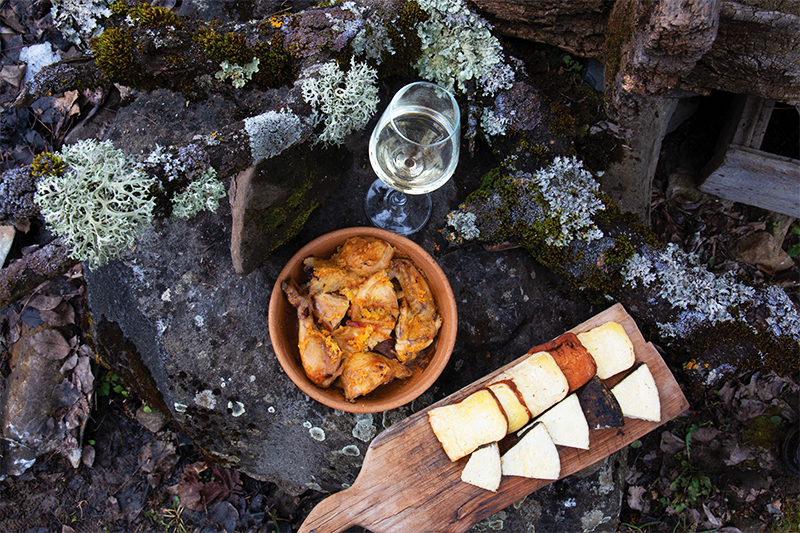
I’d also love to see the revival of forgotten Rachian recipes. The world and famous chefs should know about them along with Rachian Pet-Nats, traditional sparkling wines, classic white wines, white wines made in Churi, dry red wines, ice wines, or fortified wines. There are so many recipes that the world needs to see and taste, like cornel soup. It can be paired with both naturally semi-sweet, and dry Aleksandrouli and Mujuretuli wines. Racha always had this tradition, and it needs to be revived and brought back to life.
Racha should have a dry PDO wine. The combination of dry Aleksandrouli and Mujuretuli with Rachian ham, or beans in a pot and Lobiani with ham, should be just as known as the combination of prosciutto and Sangiovese in Italy, or Jamon and Rioja in Spain.

